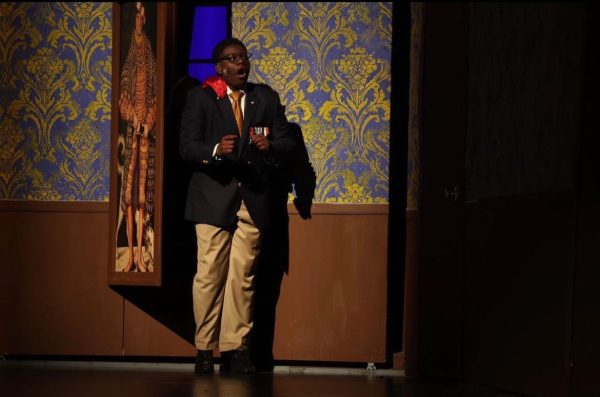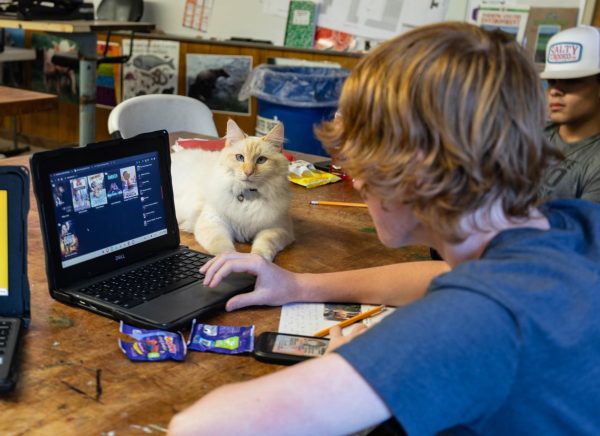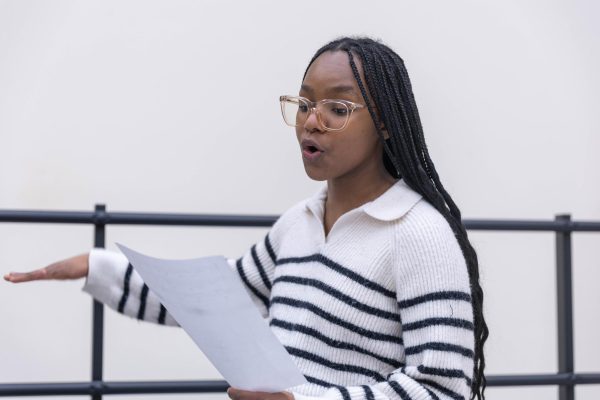Slow and steady wins the race
Graduate shares story of heart health, finding safety
February 11, 2020
Stepping into the ring, discus thrower Alyssa Higgins practiced the art of a powerful, high speed throw, but one place she did not anticipate high speeds was her heart rate. A high speed heart beat can be normal for an athlete like Higgins, but when she quit track her junior year and her heart continued to race, she knew something was wrong.
“I was in track until junior year, and once I got out of track, my heart was still racing and my mom thought [it] was dehydration,” Higgins said. “We went to the doctor, and they said that it couldn’t be dehydration, that my heart rate would not jump around like it did.”
The doctors concluded that she had Wolff-Parkinson-White (WPW) syndrome. This “accessory pathway” in the heart transports electric currents alongside the normal pathway. WPW pathways, however, are not made of muscle tissue designed for electricity, which can lead to an accelerated heart rate.
“Whenever I do any type of exercise, my heart rate gets into the 190s,” Higgins said. “I think [my doctor] said during one of the appointments that we should get it under control because once it gets into the 190s and 200s, it’s too fast for my heart, and that it can weaken in the walls of my heart.”
Luckily for Higgins, her Apple Watch served as an unexpected aid to monitoring her heart rate.
“[My heart rate] depends on the day. Most days I would get 180 [beats per minute]. But then some days it would get up to 213 [bmp],” Higgins said. “[My Apple Watch] did keep track of my heart rate and the doctors also looked at that, but they mostly looked at the heart monitor that they put me on. ”
Much like in the cases of many student athletes affected by heart issues, Higgins’ earliest signs were written off as no big deal or ignored completely.
“Sometimes I would just be doing some simple thing and my heart rate would just start racing,” Higgins said. “I would have to lay down in order to not pass out.”
Higgins and her mother didn’t immediately suspect a heart condition.
“She thought it just had to be dehydration because there’s nothing ever really been wrong with [my heart] before, until I started to show the signs after working out,” Higgins said.
WPW must be diagnosed through an invasive surgery in which the doctors have to look at the heart and determine what is causing the rapid heartbeat.
“And then once they were in there, they saw I had an extra wire. It was canceling out one of the wires in my heart that was supposed to slow [my heart] down,” Higgins said. “During the surgery they would give me adrenaline and electrocute different parts of my heart in order to get it to race. Then they would try to set it into the rhythm, and it would get into whenever the extra wire was affecting it. They found out what was causing it, and then they burned it.”
Despite efforts by doctors, though, the issue has not been completely fixed. Higgins surgery was an insufficient solution to the problem.
“It’s not fully corrected. I had my heart surgery, and right after we got back from spring break they burned the extra nerve in my heart,” Higgins said. “That was supposed to correct the problem, but whenever I got out of surgery, like the next day, it was already racing again.”
Heart rate is among many things tested on a school physical exam, yet Higgin’s condition went unnoticed through years of athletic involvement. Although Higgins’ heart rate was abnormally high, doctors conducting her physical did not advise further testing.
“Every time I got my physical they were like, ‘Yeah, your heart rate is elevated, but it’s still OK,’” Higgins said.
For a senior in high school, applying to college and managing extracurriculars are typically the center of one’s thoughts, not heart health concerns. Higgins found it was sometimes overwhelming.
“[Dealing with a heart condition so young] is a lot. Senior year was one of the hardest times of my life. There’s a lot going on, and my emotions were all over the place,” Higgins said. “They still are. It feels like they’re not really trying to fix it, but they’re just trying to put a Band-Aid on it.”





















